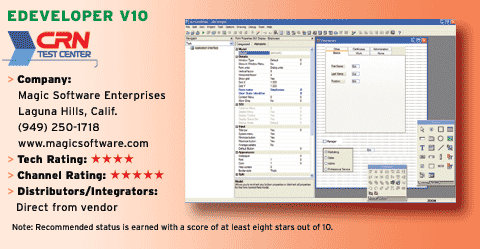Mitrix's SCM Live: Accessible Supply Chain Management For SMBs
Today, Mitrix offers SCM Live, which has been deployed in many industries, including automotive production, electronic-circuits engineering, printer production and industrial components for heavy equipment manufacturing. SCM Live is ideal for small and midsize businesses that have not been able to take advantage of costly, sophisticated global supply chain management solutions.
With first-year pricing of $125,000, not including integration costs, SCM Live is well suited for companies with annual revenue of $75 million to $750 million and fewer than 1,000 employees.
Mitrix customers like the idea of managing realtime supply chain transactions out of the box, since many of them do not have the IT bandwidth to customize and integrate complex enterprise supply chain systems or simply cannot justify the expense of premises-based solutions.
In addition to being on demand, Mitrix SCM Live provides synchronized transactions for all buying, selling and planning of supply chain operations within companies.
Even though the suite runs with a single code base, many users across multiple domains can access it simultaneously. Within each domain, users can set their own policies and roles without having to pay for dedicated hardware and IT staff.
SCM Live's roles-based Web consoles are highly configurable, allowing internal users to extend roles to external partners. In addition to collaboration, trading partners can directly interact in live fashion with SCM Live. For instance, suppliers can log on and directly communicate with sales staff and negotiate purchase orders by making counter offers on any variable such as date, price, quantity and even payment terms. Since negotiations are live, managers can quickly determine any errors.
SCM Live arrives with a library of APIs that allow Mitrix's professional services to interface with its back-end database and internal integration infrastructure. SCM Live also uses IBM's WebSphere Partner Gateway to manage its messaging.
Currently, SCM Live's messaging-transformation framework is not accessible to outside developers. Mitrix plans to allow solution providers access to SCM Live's API by the end of this year. Solution providers also will be able to manage messages and customize workflows. This will allow developers to build custom mappings and transactions, including custom error-handling routines within workflows.
SCM Live's B2B aggregation capabilities essentially do all the code interaction and data validation, so customers only need to map business forms. If some special rules between maps have to be built, customers must create custom workflows to work out those extra steps. Currently, there is no way to develop custom rules when mapping forms between partners.
SCM Live also can synchronize itself across communities, allowing partners across different business sectors to receive immediate feedback whenever delays occur in their supply chain. This connection builds powerful transparencies between partners and is extremely economical.
Mitrix currently sells only 10 percent of its products through solution providers but is looking to increase its channel sales to 50 percent with the introduction of its new channel program.
The two-tier channel program consists of Mitrix Solutions partners and Mitrix Certified partners. Solutions partners must have supply chain consulting experience, well-developed sales and marketing functions, independent lead-generation abilities, existing SCM services and/or an on-demand services portfolio, and the ability to fund Mitrix training and partner development.
To become a Mitrix Certified partner, solution providers must demonstrate experience in integrating and implementing supply chain and associated solutions, provide existing SCM services and/or an on-demand services portfolio, and have a defined organizational structure and stable financial resources.
The initial costs may be on the high side for smaller VARs, but basic margins start at 35 percent and plenty of integration opportunities abound to garner additional revenue.
